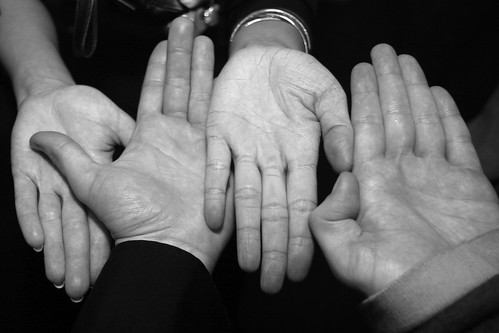Can you demonstrate power or kindness by the flick of a wrist?
.
Palm down gestures indicate power. Palm up shows submission.
via the New York Times:
Skilled politicians instinctively woo audiences with the upraised palms that made Mr. Clinton and Ronald Reagan seem so genial and helpful (or contrite, when the occasion demanded). Veteran politicans know to avoid palm-down gestures unless they’re attacking enemies or trying to look strong…
He cites Adam Kendon, author of Gesture: Visible Action as Utterance, on the deeper meaning of these hand positions:
Gestures of the Open Hand Prone or “palm down” family are used in contexts where something is being denied, negated, interrupted or stopped, whether explicitly or by implication. Open hand Supine (or “palm up”) family gestures, on the other hand, are used in contexts where the speaker is offering, giving or showing something or requesting the reception of something…
He also quotes David Givens, author of Love Signals: A Practical Field Guide to the Body Language of Courtship and Your Body at Work: A Guide to Sight-reading the Body Language of Business, Bosses, and Boardrooms on what might be the evolutionary origin of the meaning of these gestures:
The supinated (palm-up) hand originates as a component of the larger protective-crouch posture. As such, it suggests harmlessness instead of aggression, like the pronated (palm-down) hand suggests as a component of the larger push-up to a high-stand posture. These basic postures and their parts, which are wired into the vertebrate neuromuscular system, are tell-tale signs of how a chimp–or human–feels: e.g., submissive-harmless or dominant-aggressive.
Join over 100,000 readers. Get a free weekly update via email here.
Related posts:




